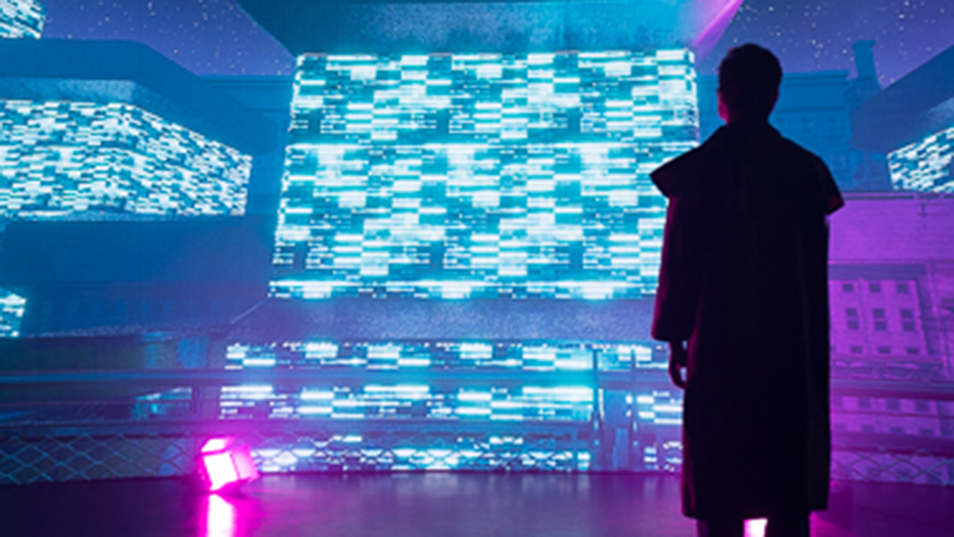Contact us
401 W. Kennedy Blvd.
Tampa, FL 33606-13490
(813) 253-3333
Most undergraduates who pursue film and media are familiar with the limitations of student set design: the reliance on repurposed backdrops, scant resources for creating intricate scenes and minimal access to locales beyond what’s readily available in the neighborhood.

The Tampa Bay-based virtual production company Vū recently gifted UT a cutting-edge tool for filmmaking, revolutionizing students’ classroom experiences — and the world of opportunities awaiting them after graduation. Photo by Marc Vaughn
But thanks to a generous gift to UT’s Department of Film, Animation and New Media, students can now produce whatever their imaginations can dream up. Back in April, Vu, a local virtual production company, presented the department with an LED “volume” — a massive, curved screen that connects to a computer and can be used to create virtual backdrops. The technology (plus training at Vu) is valued at $750,000, but the world it opens up for students? That’s priceless.
More UT News